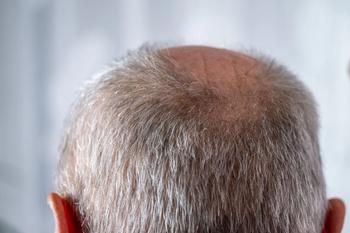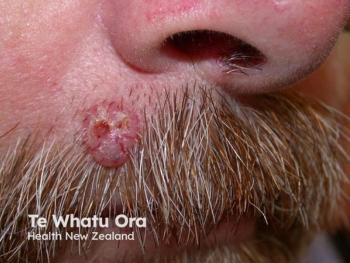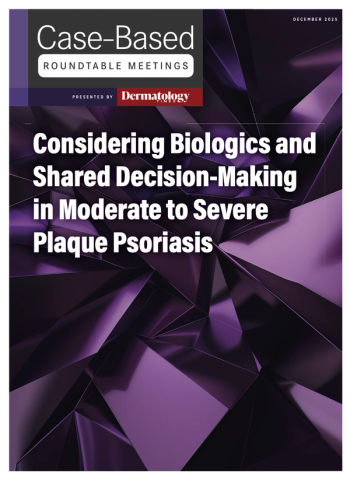
Depression Risks in Patients With Vitiligo Vary Significantly by Race and Ethnicity
Key Takeaways
- Black and Hispanic patients with vitiligo show significantly higher depression prevalence compared to Asian and White populations.
- The study utilized NIH All of Us Research Program data, including 1,087 vitiligo patients and 5,435 controls, matched by demographic factors.
New research reveals significant racial disparities in depression risk among vitiligo patients, highlighting the need for culturally sensitive mental health support.
In a poster presentation at the recent Society for Investigative Dermatology Annual Meeting held May 7-10 in San Diego, California, researchers shed new light on the complex relationship between vitiligo and depression across diverse racial and ethnic populations.1
The poster outlined that while vitiligo is generally associated with increased depression risk, this association was markedly stronger among Black and Hispanic patients compared to Asian and White populations.
Background and Methods
Prior research has established a link between vitiligo and depression;2 however, the extent to which this association varies across racial and ethnic groups remains poorly understood, according to authors of the poster. In the US, racial and ethnic minorities frequently face additional barriers to health care access, cultural stigma, and disparities in mental health care.3 These disparities may influence the prevalence and recognition of depression among patients with vitiligo.
Recognizing these gaps, the research team conducted a retrospective case-control study utilizing data from the NIH All of Us Research Program, covering the years 2018 to 2024. The study included 1,087 individuals diagnosed with vitiligo, matched 1:5 with 5,435 controls without vitiligo, based on age, sex, race/ethnicity, income, education, and insurance status.
Subgroup analyses were performed to compare depression prevalence across racial groups (Asian, Black, and White) as well as ethnicity-based subgroups such as Hispanic versus non-Hispanic individuals.
Findings
Overall, the prevalence of depression in patients with vitiligo was 40%, compared to 29.2% in controls, with an odds ratio of 1.78.
Black patients showed markedly higher depression prevalence, with 52.8% of Black patients with vitiligo diagnosed with depression versus 30.5% in controls. The multivariable analysis yielded an adjusted odds ratio of 2.33, highlighting that Black patients with vitiligo were more than twice as likely to experience depression compared to controls.
Hispanic patients had a depression prevalence of 44% versus 30%, with an adjusted odds ratio of 1.87, signifying a significant elevated risk.
Among the small sample of Asian patients with vitiligo, only 11.1% of vitiligo patients had depression, with the analysis showing non-significant association, likely reflecting limited statistical power due to small sample size.
Autoimmune comorbidities such as thyroid disease and Hashimoto’s thyroiditis were associated with higher depression rates among patients with vitiligo. Similarly, metabolic conditions like diabetes mellitus demonstrated elevated depression prevalence.
Income levels, insurance status, and educational attainment varied but did not significantly influence depression risk after adjustments.
Conclusions
The study highlights critical racial and ethnic disparities in depression among patients with vitiligo, emphasizing that Black and Hispanic individuals are at significantly higher risk.
The authors advocate for integrating routine mental health screening into dermatology settings, especially tailored for high-risk groups. Culturally sensitive approaches can help address stigma and improve access. Future research, they noted, should explore interventions such as dermatology-psychiatry collaborations and evaluate whether specific vitiligo treatments modulate depression outcomes. Furthermore, larger prospective studies are needed to confirm these observations and explore underlying mechanisms.
References
- Yan MJ, Johnsen N, Chou PP, et al. Exploring depression risk in vitiligo across racial and ethnic groups. Poster presented at: Society for Investigative Dermatology Annual Meeting; San Diego, California; May 7-10, 2025
- Molla A, Jannadi R, Alayoubi H, et al. Assessing the relationship between vitiligo and major depressive disorder severity: a cross-sectional study. JMIR Dermatol. Published online June 18, 2024.
doi:10.2196/60686 - National Academies of Sciences, Engineering, and Medicine. Communities in Action: Pathways to Health Equity. Washington, DC: The National Academies Press; 2017. Chapter 2, The State of Health Disparities in the United States. Accessed May 23, 2025.
https://www.ncbi.nlm.nih.gov/books/NBK425844/
Newsletter
Like what you’re reading? Subscribe to Dermatology Times for weekly updates on therapies, innovations, and real-world practice tips.


















